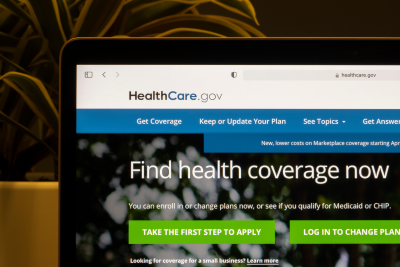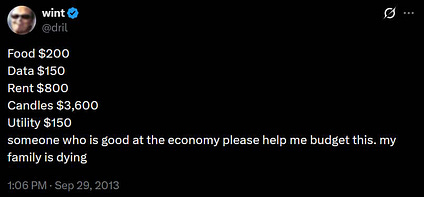Competing Claims on Who Benefits from ACA Subsidies – FactCheck.org

Analysis of Affordable Care Act Subsidy Expiration and its Impact on Sustainable Development Goals
Executive Summary
A legislative impasse concerning the extension of enhanced Affordable Care Act (ACA) tax credits poses a significant threat to progress on key Sustainable Development Goals (SDGs). The scheduled expiration of these subsidies directly impacts SDG 3 (Good Health and Well-being), SDG 1 (No Poverty), and SDG 10 (Reduced Inequalities). The termination of this financial support would trigger substantial healthcare premium increases for over 22 million Americans, potentially reversing gains in health coverage and financial protection. This report analyzes the potential consequences of the policy change, focusing on its alignment with global development objectives.
Impact on SDG 3: Good Health and Well-being
The potential lapse of enhanced subsidies directly challenges SDG Target 3.8, which aims to achieve universal health coverage, including financial risk protection and access to quality essential healthcare services. By increasing out-of-pocket costs, the policy change raises financial barriers to healthcare, which could lead to a significant rise in the number of uninsured individuals.
- Projected Loss of Coverage: The Congressional Budget Office estimates that 4.2 million more people will be uninsured by 2034 if the enhancement expires. The Urban Institute projects a loss of coverage for 4.8 million people in the next year alone.
- Increased Financial Burden: The average premium payment for subsidized enrollees is projected to increase by $1,016 for the year, representing a 114% rise.
- Coverage Statistics: Enrollment in ACA marketplace plans reached 24.3 million in 2025, with 92% of these individuals (over 22 million people) receiving subsidies that are now at risk.
Impact on SDG 1 (No Poverty) and SDG 10 (Reduced Inequalities)
The expiration of subsidies would disproportionately affect vulnerable populations, increasing the risk of poverty due to catastrophic healthcare expenditures and exacerbating existing inequalities, thereby undermining SDG 1 and SDG 10. The impact varies significantly across income levels, age groups, and geographic locations, creating a “subsidy cliff” that penalizes specific demographics.
- Low-Income Enrollees: Individuals earning between 100% and 150% of the poverty level, many of whom currently pay $0 for premiums, would face new costs of up to 4% of their income.
- Middle-Income Enrollees: Those earning above 400% of the poverty level would lose eligibility for all tax credits. This group faces the most dramatic cost increases, with some families seeing monthly premiums rise by over $1,000 or $2,000.
- Older Adults: This demographic is particularly vulnerable, as their premiums can be three times higher than those for younger enrollees. A 60-year-old couple earning just over the 400% poverty threshold could see their annual premium payments increase by more than $22,600.
Analysis of Stakeholder Positions
The debate over the subsidy extension reflects differing priorities regarding social protection, fiscal policy, and equity. The two primary political parties have presented contrasting arguments based on select data points.
-
Democratic Party Position
- Focuses on the financial strain on “working-class” and “middle-class” Americans.
- Highlights worst-case scenarios where monthly premiums could increase by thousands of dollars.
- States that approximately 95% of subsidy recipients in 2024 earned less than 400% of the poverty level.
-
Republican Party Position
- Argues that subsidies unfairly benefit well-off individuals, citing rare instances where high-income households could qualify in high-cost regions.
- Raises concerns about fiscal responsibility, noting that eligibility is based on annual income, not overall net worth.
- Advocates for separating the subsidy debate from government funding legislation to allow for broader reforms.
Financial and Enrollment Data Overview
An examination of enrollment and financial data provides context for the debate and clarifies the distribution of benefits under the current enhanced subsidy structure. This data is crucial for assessing the alignment of the policy with the SDG principle of leaving no one behind.
- Cost of Policy Extension: A permanent extension of the enhanced subsidies is estimated by the Joint Committee on Taxation and Congressional Budget Office to cost nearly $350 billion over ten years.
- Subsidy Distribution by Income:
- In 2024, approximately 95% of subsidy recipients earned at or below 400% of the federal poverty level.
- An estimated 5% of recipients earned above the 400% threshold.
- Projections indicate that if extended, 85% of federal spending on the subsidies would benefit tax filers earning $150,000 or less.
- High-Income Enrollees: While possible for high-income households to receive subsidies in specific circumstances (e.g., large families, older adults, high-premium locations), data suggests this is extremely rare. The Joint Committee on Taxation estimates no subsidy spending would go to income groups above $500,000.
SDGs, Targets, and Indicators in the Article
1. Which SDGs are addressed or connected to the issues highlighted in the article?
-
SDG 1: No Poverty
- The article is fundamentally linked to SDG 1 as it discusses the affordability of a basic necessity—healthcare—for low- and middle-income populations. The entire debate revolves around the federal poverty level (FPL), with subsidies targeted at individuals and families earning within certain percentages of the FPL (e.g., “100% and 400% of the federal poverty level”). The potential expiration of subsidies would increase out-of-pocket costs, placing a significant financial burden on households and potentially pushing them closer to or into poverty. The article notes that “Very low-income enrollees could experience high percentage increases” in what they pay, directly impacting their disposable income and financial stability.
-
SDG 3: Good Health and Well-being
- This is the most central SDG addressed. The article’s subject is the Affordable Care Act (ACA), a policy designed to increase access to health insurance. The discussion about expiring tax credits directly relates to the goal of ensuring healthy lives and promoting well-being. The article explicitly states that if the subsidies expire, millions could lose their health insurance: “The CBO estimated that 4.2 million more people will lack health insurance in 2034 if the enhancement expires.” This loss of coverage is a direct threat to achieving good health outcomes, as uninsured individuals are less likely to seek preventive or necessary medical care.
-
SDG 10: Reduced Inequalities
- The article highlights inequalities based on income, age, and location. It details how the expiration of subsidies would disproportionately affect certain groups. For instance, “older enrollees, as their premiums can be three times higher than younger policyholders,” would face particularly high cost increases. The “subsidy cliff” is described as a major issue for those “earning above 400% of poverty,” who would lose all financial help, creating a stark inequality compared to those just below the threshold. The political debate itself is framed around inequality, with Democrats focusing on “working-class” Americans and Republicans raising concerns about subsidies for the “well-off,” demonstrating that the policy is a tool for addressing economic disparities in healthcare access.
2. What specific targets under those SDGs can be identified based on the article’s content?
-
Target 1.3: Implement nationally appropriate social protection systems and measures for all… and achieve substantial coverage of the poor and the vulnerable.
- The ACA tax credits are a clear example of a “nationally appropriate social protection system.” The article discusses the scale and coverage of this system, noting that in 2025, “92% [of enrollees] received subsidies,” meaning “more than 22 million people could see some increase in their out-of-pocket costs if the enhancement expires.” This demonstrates the system’s role in providing a financial safety net for healthcare costs for a substantial portion of the population, particularly the vulnerable.
-
Target 3.8: Achieve universal health coverage, including financial risk protection, access to quality essential health-care services…
- This target is directly addressed. The ACA subsidies provide “financial risk protection” by lowering premium costs. The article quantifies this protection by showing how its removal would increase financial burdens, with an “average increase is $1,016 for the year, a 114% rise.” Furthermore, the potential for “4.8 million more [to] lack insurance next year” if subsidies expire is a direct challenge to achieving “universal health coverage” and ensuring “access to… health-care services.”
-
Target 10.4: Adopt policies, especially fiscal, wage and social protection policies, and progressively achieve greater equality.
- The expanded ACA subsidies are a fiscal and social protection policy designed to reduce inequality in healthcare access. The article explains how the policy was changed to achieve greater equality by eliminating the “400% income cap” and increasing financial help. The debate over extending this policy is a debate about the role of fiscal policy in ensuring that healthcare is not a privilege for the wealthy. The article notes that a permanent extension “would cost nearly $350 billion over 10 years,” highlighting its significance as a major fiscal policy aimed at social goals.
3. Are there any indicators mentioned or implied in the article that can be used to measure progress towards the identified targets?
-
Indicator for Target 1.3 (Social Protection): Proportion of population covered by social protection systems.
- The article provides specific data points that serve as this indicator. It states that “Enrollment in ACA marketplace plans has more than doubled from 2020 to 2025, when enrollment hit 24.3 million.” More specifically, it notes that “92% of enrollees in 2025 received subsidies.” This figure directly measures the proportion of the ACA marketplace population covered by this specific social protection system.
-
Indicator for Target 3.8 (Universal Health Coverage): Proportion of population with large household expenditures on health as a share of total household expenditure or income.
- The article is rich with data for this indicator. It describes how, without subsidies, costs would rise significantly. For some, payments would go from “$0 out of pocket” to “about 2% to 4% of their income.” For others, the amount they pay would be capped, but at higher percentages than before (e.g., “no more than 10% for 2026”). It provides concrete examples, such as a 60-year-old couple seeing their premium costs rise from “8.5%” of their income to “about a quarter of this couple’s annual income.” These figures directly measure the financial burden of healthcare on households.
-
Indicator for Target 3.8 (Universal Health Coverage): Coverage of essential health services.
- While not measuring the specific services, the article uses health insurance coverage as a proxy for access to essential health services. The key metric mentioned is the number of uninsured people. The article cites estimates that “4.2 million more people will lack health insurance in 2034” and “4.8 million more would lack insurance next year” if the subsidies expire. This change in the number of insured individuals is a direct measure of progress (or regression) toward universal coverage.
4. Summary Table of SDGs, Targets, and Indicators
| SDGs | Targets | Indicators (as mentioned or implied in the article) |
|---|---|---|
| SDG 1: No Poverty | 1.3: Implement nationally appropriate social protection systems and measures for all. |
|
| SDG 3: Good Health and Well-being | 3.8: Achieve universal health coverage, including financial risk protection and access to quality essential health-care services. |
|
| SDG 10: Reduced Inequalities | 10.4: Adopt policies, especially fiscal, wage and social protection policies, and progressively achieve greater equality. |
|
Source: factcheck.org
What is Your Reaction?
 Like
0
Like
0
 Dislike
0
Dislike
0
 Love
0
Love
0
 Funny
0
Funny
0
 Angry
0
Angry
0
 Sad
0
Sad
0
 Wow
0
Wow
0




















































.jpg.webp?itok=0ZsAnae9#)



























